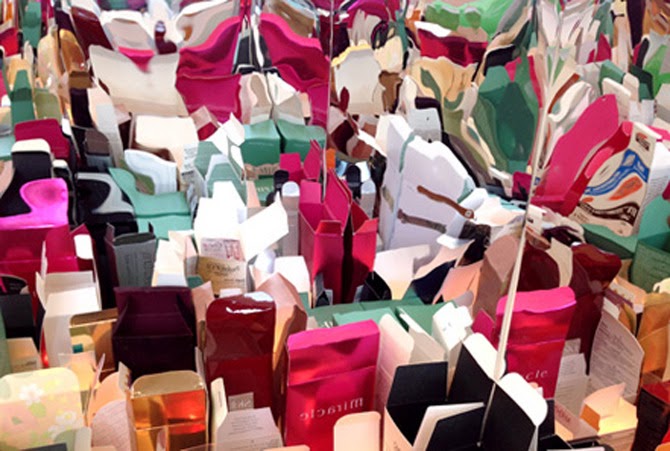Junk Space
Upon
research of Junkspace this image stood out among the rest. It is not of the
city, public space, or a building, but with close examination a compiling of
boxed and mirrors that reflect them. “Junkspace is additive, layered, and
lightweight, not articulated in different parts but subdivided,”… The
photograph seems to be a discussion on this layering of objects and the
distortion that creates an entirely new thing. " http://cargocollective.com/eugina/13-JUNK-SPACE-Photography "
This image
corresponds to an article about the transformation of 4 cities’ alleyways into
public spaces. Junkspace is being used as a form of activated public space. The
city is trying to win back the unused, and often times desolate, spaces to
benefit the public interest. Unlike Koolhaas’ argument that Junkspace has
infiltrated all of our spaces and cannot be removed, these cities are stating
that it is possible to change a space for the better. " http://urbanful.org/2014/12/29/laneways-coming-life-north-america/ "
This
shopping center like many in America is showing its age. Built to house the
workings of a capitalist society driven by the consuming of goods, it is losing
its importance within the public. Strips of commercial shopping are replacing
the large mall experience. These spaces were developed to be longer lasting
facilities, but are now just reminders that architecture in today’s society is
transient and replaceable always changing.
Like many
downtown cities Asheville went through a period of decline, ad has only been
revitalized within the last 30 years. This article talks about the development
of the downtown as a historic restoration. At one point there was a proposal to
demolish a large portion of the city and rebuild a commercial center. Wanting
to retain the characteristics of the city, the people rejected the idea. Here
it can be seen that the value of actual public spaces opposed to retail
shopping centers was valued more by the society.
Downtown
Asheville has many surface parking lots which are utilized during weekends and
events, but these open spaces are not fully consumed during the day. As public
spaces that are incorporated into the landscape of the city they should bring
value to the public and function in some beneficial way at all times. How do we
occupy these spaces when they are not in use and activate this junkspace within
the city?







Comments
Post a Comment